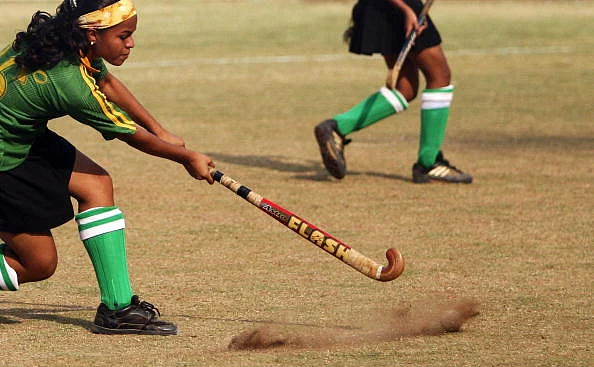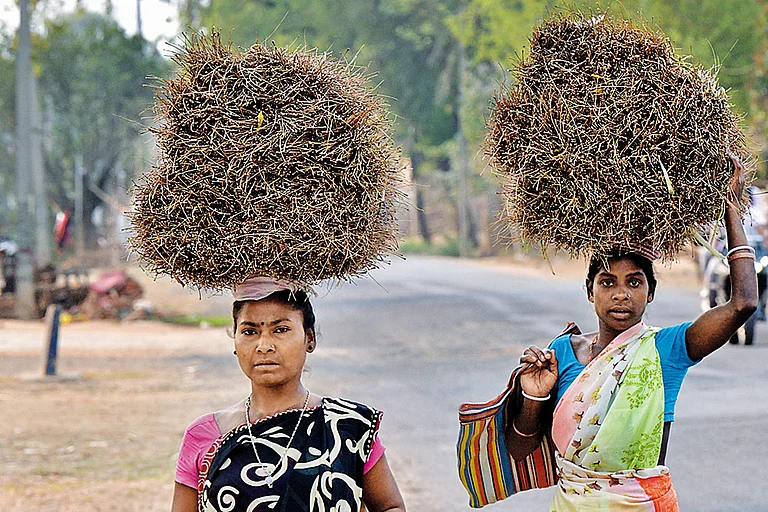The word Jharkhand literally means the land of bushes, trees and forests. Its geographical and demographic differences from Bihar inspired the movement for the formation of a separate state Jharkhand which became a reality in 2000. The movement was initiated and run mainly by the tribal communities of the region, though the non tribal communities also rendered their valuable contributions and support to the movement. The population of Jharkhand however is now is heterogeneous since it became home to different tribal communities. Their culture, languages, rituals and lifestyle resemble their close relationship with mother nature.
The tribal youth in Jharkhand excel in games and sports, and hockey and archery have always been their first choice. Hockey runs in their veins. They in general, and the tribal girls in particular, have set their own milestones in hockey but, sadly enough, their struggles and achievements have never been documented properly. We do find some details in magazines, newspapers and in some other sources but their focus was scattered. Such literary works tried to cover the whole scenario of games and sports in a nutshell. So, there was a complete lack of any authentic work on women's hockey in Jharkhand and the achievements of the tribal girls in this field. The book Jharkhand Mein Mahila Hockey is written by local researcher and writer Dr Shahnawaz Quraishi who has had a long career as a sports journalist. The book encircles not only the evolution of hockey and women's hockey but also traces its history in Jharkhand. An added advantage of the book comes in the form of its preamble and introduction written by Padma Shri awardee Balbir Dutt and Harivansh, the deputy chairman of the Rajya Sabha respectively. Mr Dutt, the highly revered journalist and author is a witness to the journey of women hockey players in Jharkhand. Harivansh ji has had a long and proud career in the field of journalism before joining politics and has felt the glooms and glory of the tribal arena. Their views and sentiments matter a lot for a reader.
The very first chapter of the book, "Itihas ke Jharokhey Se", tells us about the struggling era of women's hockey in erstwhile Bihar, that is now Jharkhand. Further chapters depict the stories of the brilliant success of the tribal girls, the difficulties and hardships faced by them, be it the lack of cooperation and support from their families and society or scarcity of resources. But, in spite of the grim situations, the tribal girls never lose their courage and achieve brilliant success in the international arena.
When we go through the book, we come across the stories of Salima Tete, Nikky Pradhan, Sangeeta Kumari, Beauty Dungdung and so many other international women hockey players who belong to Jharkhand, and have set their own milestones inspite of all the hardships they faced in the early stages of their lives and careers. Chhota Nagpur is the heart of Jharkhand and the recent history of this region is that of backwardness, poverty and lack of resources in spite of being a mineral rich region. Surprisingly enough, a number of tribal girls adapted themselves to the existing situations and conditioned their lives to bring a change. Lack of proper footwear could not limit their aspirations and they got accustomed to playing barefoot! We find an abundance of such descriptions in the book.
Dr Quraishi has made the best use of his research-oriented outlook and fine skills of presentation in making the book readable and appreciable. The language is simple and the use of rural toned Hindi in many places makes a reader acquainted with the rural surroundings of these players. He tells us how a rural girl is playing an international match but her family has no television set, no electricity and no means to watch their apple of eyes growing to glory. Then, the district administration comes forward and manages everything necessary to make the family and villagers see their daughter on television screens.
At another place, the author describes the problem of language being a hurdle for the players. Most of the star hockey players of Jharkhand belong to rural areas and are well versed in their tribal and regional languages and can communicate in Hindi but they lack knowledge of the English language. No doubt, it is from nowhere a shortcoming as they are regularly in practice to improve their game and nobody can and should expect them to learn foreign languages. But, we are told how they were harassed by a trainer for not being able to speak English. It went on to such an extent that one of the players reached so close only to quit the game forever. The canvas of the book is wide enough to include the trainers, coaches and administrators of women's hockey as well. We find the narration of the sacrifices and hard work of the coaches who left no stone unturned in making rural tribal talents shine before the world.
Narendra Singh Saini, Kulwant Singh, Rajpal Singh Sidhu, Dasrath Mahto, Pratima Barua and many other names feature in this list. The author pays due respect to the contributions of Narendra Singh Saini for the development of women's hockey in Jharkhand. Sports administrators like Mridula Sinha and Bholanath Singh figure prominently in the book. We come across the interesting story of Bholanath Singh, earlier a wrestling administrator who turned towards hockey and earned a place of high reputation as a women's hockey administrator. Mridula Sinha, the former principal of the Govt Girls High school, Bariatu, Ranchi has also received due recognition by the author. It was no other than Mrs Sinha who converted Bariatu School into a women's hockey factory which has in turn produced more than sixty national and international women hockey players.
Mention of Benedict Kujur thrills us, who banned the entry of school students who came without hockey stick. It seems pleasant to hear about the hockey lovers like Manoj Konbegi who came forward to help and support many players in times of crisis like the COVID era when they had no opportunity to continue their practice due to lack of resources. Such descriptions are inspiring and motivating and also, bring the real heroes to the forefront.
The book is worth reading for its subject matter, clarity, simplicity of language, wide canvas and fine descriptive style. Only a few paragraphs dealing with the consecutive performance of the players seem to be a little irritating and could have been converted into boxes or tables. The most significant aspect of the book is its authenticity. The author has mentioned all the sources of the information this book is based upon. It has made the book an authentic document for researchers, sports lovers and general readers.





















